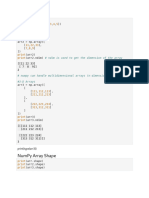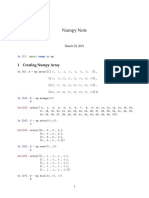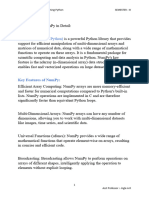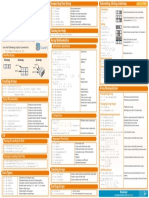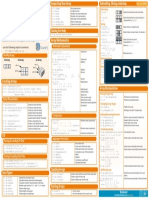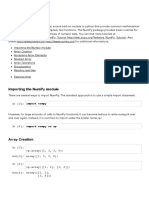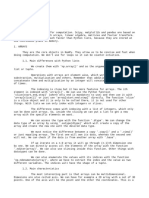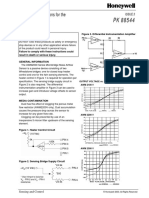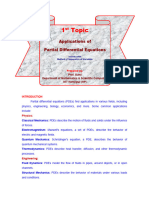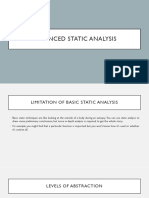Universidad de Córdoba
ING SISTEMAS
Curso: Diplomado Aprendizaje autónomo
Profesor: Cristian Revueltas
Alumno: Cristian David Miranda Garces y Juan Diego López
Fecha de Creación: 21/05/2024
Fecha Actualizada: 21/05/2024
import numpy as np
keyboard_arrow_down Punto #1
# Matriz unidimensional con números enteros usando NumPy
matriz_numpy = np.array([1, 2, 3, 4, 5,6,7,8,9,10])
print("")
print(matriz_numpy)
[ 1 2 3 4 5 6 7 8 9 10]
# Matriz bidimensional con números enteros usando NumPy
import numpy as np
matriz_2d_np = np.array([[1, 2, 3], [4, 5, 6]])
print("")
print(matriz_2d_np)
[[1 2 3]
[4 5 6]]
# Matriz tridimensional con números enteros usando NumPy
import numpy as np
matriz_3d_np = np.array([[[42, 22, 32], [43, 53, 63]], [[74, 84, 94], [100, 110, 120]]])
print("")
print(matriz_3d_np)
[[[ 42 22 32]
[ 43 53 63]]
[[ 74 84 94]
[100 110 120]]]
#Crear una matriz tipo zeros
matrizt_zeros= np.zeros((3,3,3))
print("")
print(matrizt_zeros)
print("")
[[[0. 0. 0.]
[0. 0. 0.]
[0. 0. 0.]]
[[0. 0. 0.]
[0. 0. 0.]
[0. 0. 0.]]
[[0. 0. 0.]
[0. 0. 0.]
[0. 0. 0.]]]
#Crear una matriz tridimensional (cubo) con forma (2, 3, 4), llena de ceros
import numpy as np
cubo = np.zeros((2, 3, 4), dtype=np.float32)
print(cubo)
[[[0. 0. 0. 0.]
[0. 0. 0. 0.]
[0. 0. 0. 0.]]
[[0. 0. 0. 0.]
[0. 0. 0. 0.]
[0. 0. 0. 0.]]]
#Crear una matriz tipo np.ones
import numpy as np
matrizt_one= np.ones((3,3,3))
print("")
print(matrizt_one)
[[[1. 1. 1.]
[1. 1. 1.]
[1. 1. 1.]]
[[1. 1. 1.]
[1. 1. 1.]
[1. 1. 1.]]
[[1. 1. 1.]
[1. 1. 1.]
[1. 1. 1.]]]
#Creación de matrices con np.arange
import numpy as np
vector = np.arange(2,10,2)
print("")
print(vector)
[2 4 6 8]
#Creación de matrices con np.linspace
Array = np.linspace(0, 30, 10,endpoint=True)
print(Array)
print("")
Array = np.linspace(0, 30, 10,endpoint=True)
print(Array)
[ 0. 3.33333333 6.66666667 10. 13.33333333 16.66666667
20. 23.33333333 26.66666667 30. ]
[ 0. 3.33333333 6.66666667 10. 13.33333333 16.66666667
20. 23.33333333 26.66666667 30. ]
keyboard_arrow_down Punto #2
Indexación y segmentación
#Acceder al tercer elemento de un array unidimensional
Array_1d = np.array([14, 22, 33, 44, 55])
tercer_elemento = Array_1d[2]
print(Array_1d)
print("")
print(tercer_elemento)
[14 22 33 44 55]
33
#Extraer una subsecuencia del array
array = np.array([[1, 2, 3], [4, 5, 6], [7, 8, 9]])
subsecuencia = array[2,2] # Extrae la fila 2 y columna 2
indexacion = array[1:3] # Extrae las filas 1 y 2
print(array)
print("")
print(subsecuencia)
print("")
print(indexacion)
[[1 2 3]
[4 5 6]
[7 8 9]]
[[4 5 6]
[7 8 9]]
#segmentacion de un array
temperaturas = np.array([[22, 25, 27, 23, 24, 26, 28],[20, 40, 50, 21, 26, 45, 42],[32, 36, 26, 31, 30, 12, 21]])
temperaturas_mayores_25 = temperaturas[temperaturas > 25]
print (temperaturas)
print("")
print("temperaturas por encima de 25 grados: ",temperaturas_mayores_25)
[[22 25 27 23 24 26 28]
[20 40 50 21 26 45 42]
[32 36 26 31 30 12 21]]
temperaturas por encima de 25 grados: [27 26 28 40 50 26 45 42 32 36 26 31 30]
Haz doble clic (o ingresa) para editar
keyboard_arrow_down Método "np.reshape"
#Cambiar la forma con np.reshape.
np.random.seed (10)
x = np.random.randint(1, 100, size=(4, 4))
y = np.random.randint(1, 100, size=(4, 4))
print("Matriz x:")
print(x)
print("\nMatriz y:")
print(y)
array_reshape_x = x.reshape(2, 8)
array_reshape_y = y.reshape(8, 2)
print("\narray que se redimensiono x:")
print(array_reshape_x)
print("\narray que se redimensiono y:")
print(array_reshape_y)
Matriz x:
[[10 16 65 29]
[90 94 30 9]
[74 1 41 37]
[17 12 55 89]]
Matriz y:
[[63 34 73 79]
[50 52 55 78]
[70 14 26 14]
[93 87 31 31]]
array que se redimensiono x:
[[10 16 65 29 90 94 30 9]
[74 1 41 37 17 12 55 89]]
array que se redimensiono y:
[[63 34]
[73 79]
[50 52]
[55 78]
[70 14]
[26 14]
[93 87]
[31 31]]
keyboard_arrow_down Operaciones básicas como Arrays
Suma
Resta
Multiplicación
División
# Crear dos arrays
array1 = np.array([1, 2, 3, 4])
array2 = np.array([5, 6, 7, 8])
# Suma de arrays
suma = np.add(array1, array2)
print("Suma:", suma)
# Resta de arrays
resta = np.subtract(array1, array2)
print("Resta:", resta)
# Multiplicación de arrays
multiplicacion = np.multiply(array1, array2)
print("Multiplicación:", multiplicacion)
# División de arrays
division = np.divide(array1, array2)
print("División:", division)
Suma: [ 6 8 10 12]
Resta: [-4 -4 -4 -4]
Multiplicación: [ 5 12 21 32]
División: [0.2 0.33333333 0.42857143 0.5 ]


